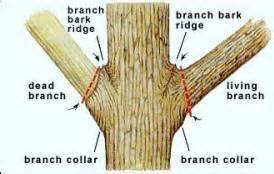Why Not Use Pruning Sealer?

Southwest Yard & Garden is a weekly column, written by Curtis W. Smith, Ph.D., Extension horticulture specialist, that addresses garden and landscape questions. Here is a reprint from the February 10, 2001 column found in the archives at NMSU.
Question:
Why do you recommend that pruning paint not be used on trees? My wife’s experience tells her that pruning paint is a good procedure.
Answer:
It does seem counter to common sense to leave a wound uncovered when we consider it from a human perspective. That is the way we tend to think about wounds, but remember a tree is not a human, or even an animal, and responds to things in a different manner. In the natural environment, branches break from trees in wind storms and must have a mechanism to defend themselves without a gardener going into the forest and applying wound sealer to every injury. Certainly, some of these cause problems for the tree, but in many cases the tree has the natural defense mechanisms to manage the problem.
A tree doesn’t “heal.” It only closes over the wound, enclosing the damage inside the tree. It has the ability to compartmentalize diseases and damage tissue sealing them from the healthy tissues in many instances. These damaged areas then remain in the tree and can be seen many years later if the tree is cut. It is possible to see scars (compartmentalized damage) caused by fires 50 and 100 years before the tree was finally cut. There are instances when the damage to a tree is too severe and the tree rots internally, but such damage cannot be stopped by a pruning sealer.
Some people think that pruning sealer will help prevent the tree from “bleeding to death.” Trees don’t bleed—they don’t have blood. The blood in an animal is critical because it carries oxygen to all the cells within the body. Plant sap carries water, minerals and sugars, but does not carry oxygen. Loss of blood in an animal will cause cell death for lack of oxygen. Plants don’t have this problem. They can lose a lot of sap without major injury. The dripping sap just irrigates the tree. Pruning sealers will have little effect in reducing the dripping of sap. It just stops naturally as the tree compartmentalizes the wound.
Many pruning sealer compounds are black and contain asphalt. This black material absorbs our New Mexico sunlight and becomes quite hot. The heat can kill the tender cells that the tree produces to close the pruning wound and in that manner delays wound closure and compartmentalization. Lighter-colored materials do less damage, but any containing a petroleum-based solvent can damage newly developing wound closure cells.
Scientific research has shown that the pruning sealer is not necessary. Much more important is proper pruning technique. Knowledge of tree anatomy and physiology allows us to prune a tree and allow the tree to use its protective mechanisms to protect itself. It is also wise to minimize pruning in landscape trees by training a tree when it is young. Cutting small branches when the tree is young precludes the necessity to cut larger branches later. The large wounds produced by removing large branches create greater difficulties for the tree.
